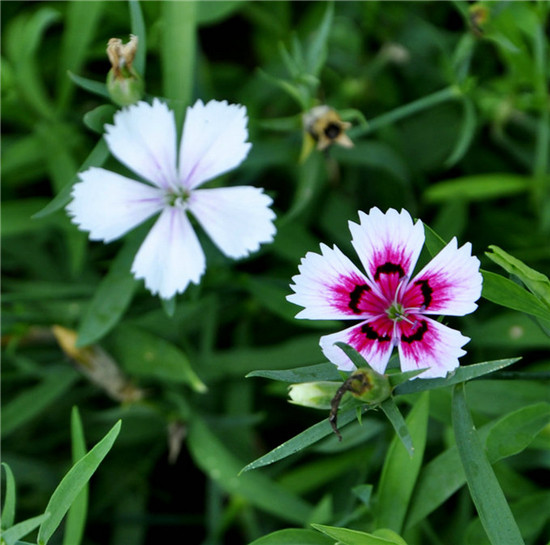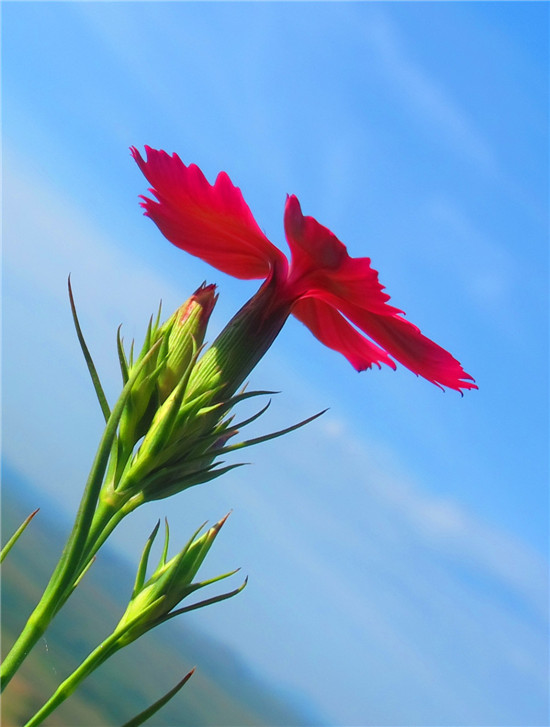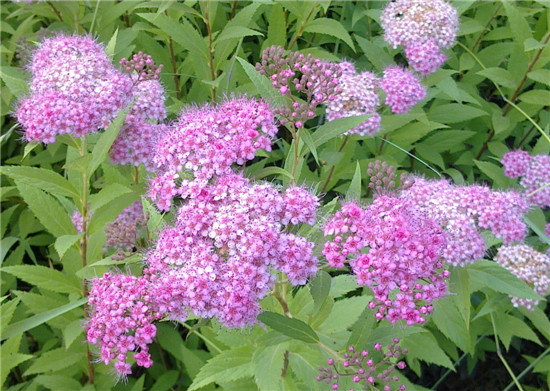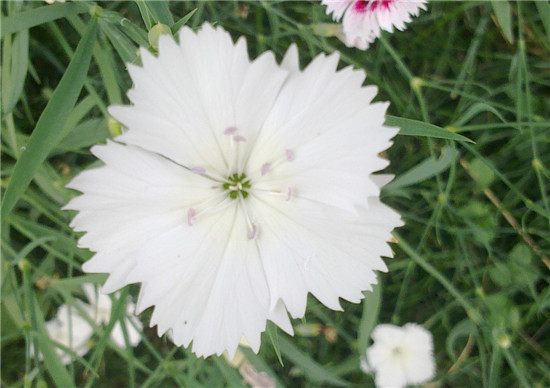How to cultivate Phyllostachys pubescens
Carnation is a kind of plant that grows on grasslands and hillside grasslands. Now it has been planted in potted plants door to door. Next, let's learn about the breeding methods and precautions of carnation.

Carnation flower is a perennial perennial grass flower of Caryophyllaceae, which is now cultivated as biennial flowers. The plant height is 30-50 cm, white-green. Stems tufted, smooth and glabrous. Leaves striped or lanceolate. Flowers solitary, single or double, light red, red, light purple, purple, white, complex color, etc., petal edge serrated, florescence May-September. The capsule is orbicular and the seed is black. Another is produced in Europe, called the American carnation flower, the flower is the cymbidium.
Characteristics: sunny, cold-resistant, drought-resistant, waterlogging-proof, good drainage and fertile sandy loam. It is cold-resistant but not resistant to heat, and likes sunny, highly dry, ventilated, and well-drained fertile loam.
Phyllostachys pubescens is a perennial herbaceous flower with weak persistent roots, which is mostly cultivated as 1-2-year plants. Potted carnation flowers require adequate basic fertilizer, 2-3 plants per pot. Seedlings grow to 15cm high to remove terminal buds, promote their branches, and then pay attention to the proper removal of axillary buds, otherwise more branches, will make nutrients scattered and small flowering, proper removal of axillary buds to make nutrients concentrated, can make flowers large and colorful.

During the growth period, it should be placed in the sunny, well-ventilated place to maintain, keep the basin soil moist, about every 10 days or so apply mature thin liquid fertilizer, too much Rain Water in summer, pay attention to drainage and loosen the soil. The flowers of carnation are easy to cross, and those who keep the seeds need to be planted in isolation. Some leaf axillary buds should be removed in time before flowering, mainly to ensure that the top buds bloom. It is advisable to water less in winter. If the temperature is kept at 5-8 ℃, it will blossom continuously in winter and spring.
The culture method of carnation:
1. Soil: clayey soil which requires good drainage, rich humus, good fertilizer retention and slightly alkaline, can be mixed with 6 parts of garden soil, 2 parts of compost and 2 parts of sandy soil.
2. Watering: the growth of carnation is strong and resistant to drought. In rainy and wet areas, the soil is easy to harden and the root system develops abnormally due to poor ventilation, so attention should be paid to loosening the soil and drainage in the rainy season. Except for timely watering during the growing and blooming season. It is advisable to keep the soil moist by watering less at ordinary times.

3. Temperature: the suitable temperature for the growth of carnation is 15-20 ℃. In winter, the temperature should be kept above 12 ℃ in the greenhouse. The air wettability should be kept at about 75%, and proper spraying of water before flowering can prevent the bud from cracking in advance.
4. Fertilization: Carnation likes fertilizer, applying sufficient amount of baking fertilizer and bone powder before planting, and applying liquid fertilizer continuously during the growing period, generally applying mature thin fertilizer and water every 10 days or so, and applying topdressing after flower picking.
5. Lighting: ensure 6-8 hours of light every day. At the height of summer, the carnation flower is in a semi-dormant state, so we should pay attention to avoid the hot sun exposure. Avoid stagnant water in the basin, otherwise the roots are easy to rot.
Pest control
Purulent disease
After cleaning the diseased branches of the garden, spray in time to prevent, can spray 2-5 degrees stone sulfur mixture or pentachlorophenol sodium 200-300 times liquid. In order to control the scab on the transferred parasitic plants, the medicine should be sprayed 1-2 times in the first and middle of March to kill the spores of overwintering bacteria; in the growing season, when the new leaves are unfolded, they can be sprayed with 1500-2000 times of 25 strychnine, 50 mancozeb, or 25 nail cream copper wettable powder once every 7-10 days for 2-3 times. It can be sprayed with 1500 times of 50 verapamil wettable powder.

Red spider
Before the overwintering eggs hatch, scrape the bark and burn it centrally. after scraping, white (lime water) is applied on the trunk to kill most of the overwintering eggs. According to the hatching law of the overwintering eggs of the red spider and the habit of feeding and breeding on the weeds first after hatching, turning the ground in early spring, clearing the ground weeds and keeping no weeds in the field during the incubation period of the overwintering eggs, the red spiders died because they could not find food. The chemical control application of 4000-5000 times uniform spray, 40% diclofenac EC 1000-1500 times, 20% mifenjing wettable powder 2000 times, 15% chlorpromazine EC 2000 times, 1.8% paraben EC 6000-8000 times can achieve the ideal control effect.
The above is the whole content of how to cultivate carnation and the culture method of carnation for you. I hope this article can help you. Please continue to follow us.
Related
- Wuhan Hospital Iron Tree Blooming Result Was Instantly Frightened by the Gardener Master
- Which variety of camellia is the most fragrant and best? Which one do you like best?
- What is the small blue coat, the breeding methods and matters needing attention of the succulent plant
- Dormancy time and maintenance management of succulent plants during dormancy
- Minas succulent how to raise, Minas succulent plant pictures
- What are the varieties of winter succulent plants
- How to raise succulent plants in twelve rolls? let's take a look at some experience of breeding twelve rolls.
- Attention should be paid to water control for succulent plants during dormant period (winter and summer)
- Watering experience of twelve rolls of succulent plants
- Techniques for fertilizing succulent plants. An article will let you know how to fertilize succulent plants.



